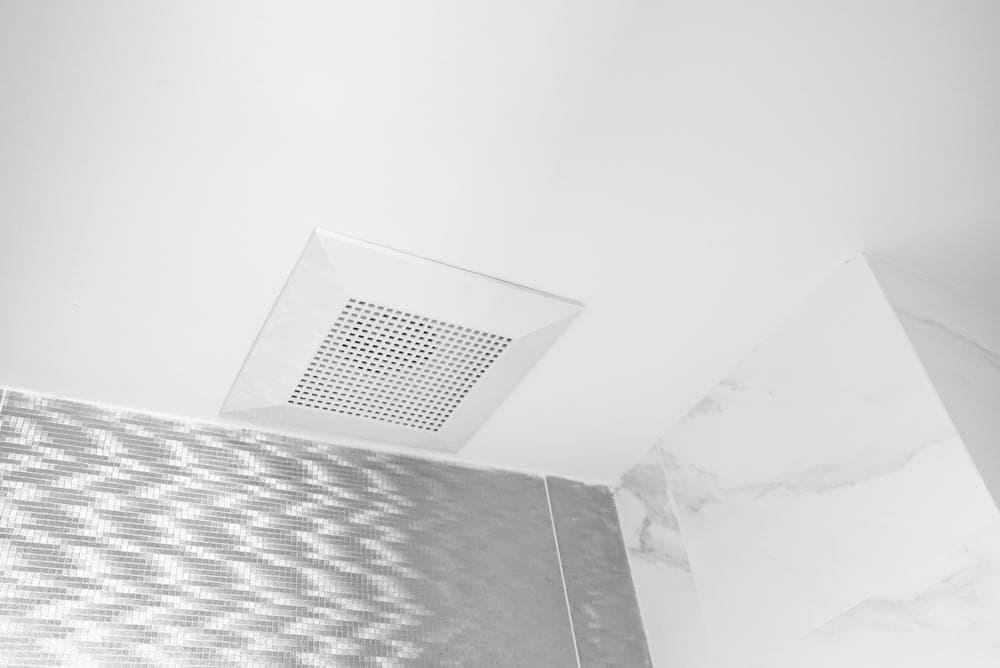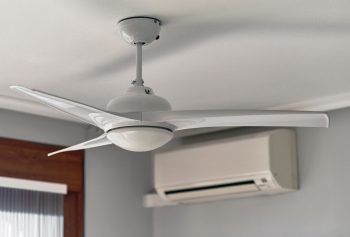
A bathroom fan is a crucial component of your home’s ventilation system. It helps in removing excess humidity, odors, and other pollutants from your bathroom, enhancing the indoor air quality. The effectiveness of a bathroom fan is largely determined by its CFM (Cubic Feet per Minute) rating, which measures the volume of air the fan can move in a minute. In this comprehensive guide, we will explain how to measure CFM for a bathroom fan, why it’s important, and how to choose the right fan for your bathroom.
To measure the CFM (Cubic Feet per Minute) for a bathroom fan, first calculate the volume of your bathroom by multiplying its length, width, and height in feet. Then, divide this volume by 60 and multiply the result by 8 (the number of air changes per hour recommended for bathrooms). This will give you the required CFM for your bathroom fan. Choose a fan that meets or exceeds this CFM rating for optimal ventilation.
What is CFM and Why is it Important?
CFM stands for Cubic Feet per Minute. It is a measurement of airflow volume, indicating how much air a bathroom fan can move in a minute. The higher the CFM rating, the more air the fan can circulate, effectively removing moisture, humidity, odors, and other pollutants from your bathroom.
The appropriate CFM rating for your bathroom fan depends on the size of your bathroom and the number of fixtures it contains. A fan with a lower CFM rating than required can lead to problems like mold and mildew due to excess humidity, while an overpowered fan can cause unnecessary noise and energy consumption.
Calculating CFM for a Bathroom Fan
To calculate the CFM for your bathroom fan, follow these steps:
- Measure the dimensions of your bathroom: Measure the length, width, and height of your bathroom in feet.
- Calculate the volume of your bathroom: Multiply the length, width, and height to find the volume of your bathroom in cubic feet. For example, if your bathroom is 10 feet long, 8 feet wide, and 9 feet high, the volume would be 720 cubic feet (10 x 8 x 9).
- Determine the required airflow: Divide the volume of your bathroom by 60 (the number of minutes in an hour) and then multiply the result by 8 (the number of air changes per hour recommended for bathrooms). Using the example above, the calculation would be (720 / 60) x 8 = 96 CFM.
- Choose a bathroom fan with a CFM rating that meets or exceeds the calculated value: In this example, you would need a bathroom fan with a CFM rating of at least 96. It’s a good idea to choose a fan with a slightly higher CFM rating than the calculated value for better performance.
Standard CFM for Different Bathroom Sizes
Different bathroom sizes require different CFM ratings. Here’s a quick reference chart:
- Less than 50 sq. feet: 50 CFM minimum
- 50-100 sq. feet: 1 CFM per square foot of floor space
- More than 100 sq. feet: Add the CFM requirement for each fixture (Toilet 50 CFM, Shower 50 CFM, Bathtub 50 CFM, Jetted tub 100 CFM) .
Improving CFM of a Bathroom Fan
If your bathroom fan’s CFM is lower than required, consider the following options:
- Replace the fan: Choose a fan with a higher CFM rating suitable for your bathroom size.
- Upgrade the fan motor: Some manufacturers offer upgrade kits that can increase the airflow of your existing fan.
- Improve ductwork: Replace flexible ducts with rigid metal or PVC ducts to reduce air resistance and improve airflow.
- Clean and maintain the fan: Regularly clean the fan blades, motor, and housing to ensure optimal performance.
Conclusion
The CFM of a bathroom fan plays a vital role in maintaining the air quality of your bathroom. By accurately measuring the CFM and choosing a fan that meets or exceeds the required value, you can ensure that your bathroom remains well-ventilated, comfortable, and free of excess moisture and odors.
Frequently Asked Questions
What if my bathroom has multiple fixtures? How do I calculate the CFM in this case?
If your bathroom is larger than 100 square feet and has multiple fixtures like a toilet, shower, bathtub, and jetted tub, you need to add the CFM requirement for each fixture. The standard CFM requirements are: Toilet – 50 CFM, Shower – 50 CFM, Bathtub – 50 CFM, and Jetted tub – 100 CFM. Add these values to get the total CFM requirement for your bathroom.
Can I install a fan with higher CFM than required for my bathroom?
Yes, you can install a fan with a higher CFM rating than required. In fact, it’s a good idea to choose a fan with a slightly higher CFM rating than the calculated value for better performance. However, keep in mind that an overpowered fan can cause unnecessary noise and energy consumption.
How often should I clean my bathroom fan for optimal performance?
It’s recommended to clean your bathroom fan at least once every 3-4 months to ensure optimal performance. Regular cleaning helps in removing dust and debris that can hinder the fan’s performance and reduce its CFM.
Does the type of ductwork affect the CFM of a bathroom fan?
Yes, the type of ductwork can significantly impact the CFM of a bathroom fan. Flexible ducts can cause air resistance, reducing the fan’s CFM. Replacing them with rigid metal or PVC ducts can improve airflow and increase the fan’s CFM.












